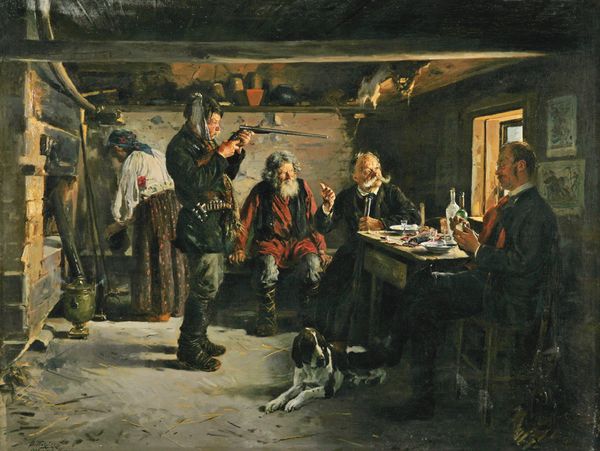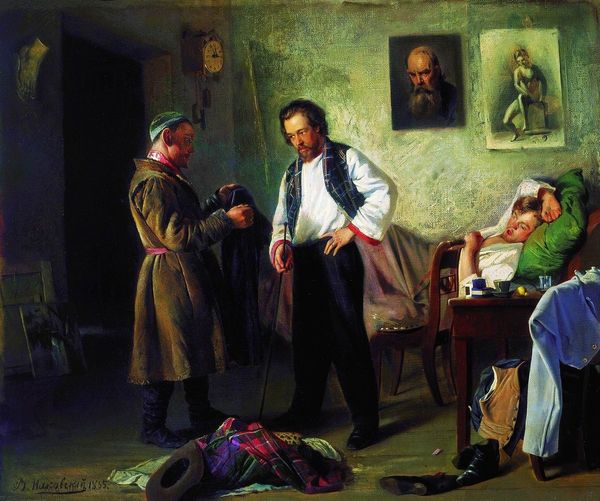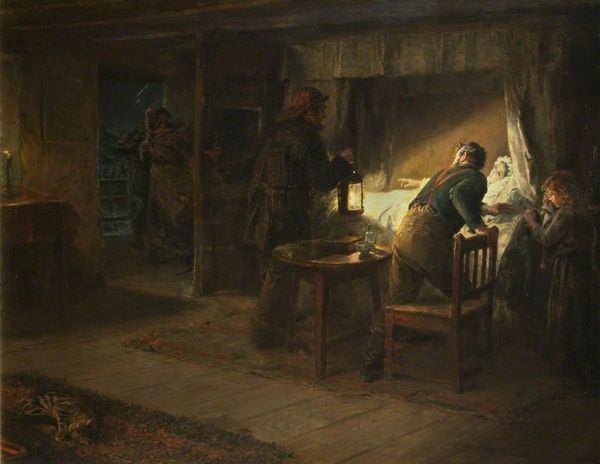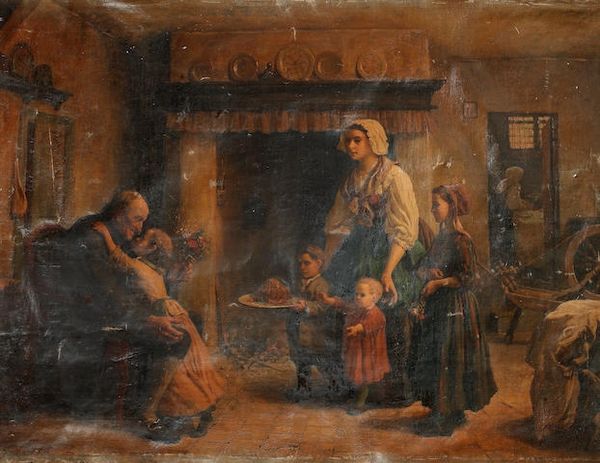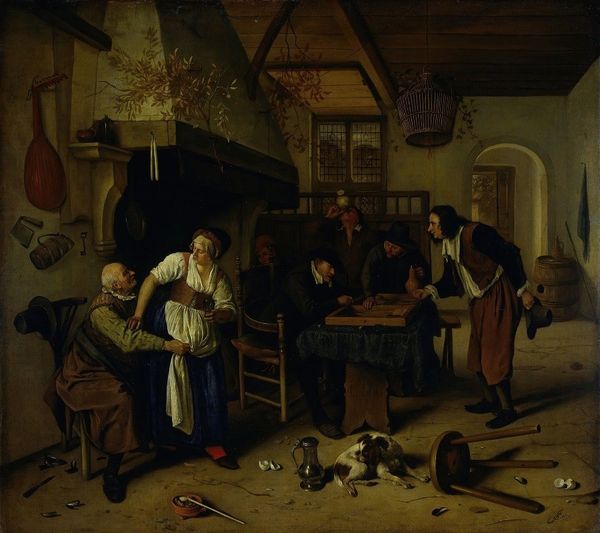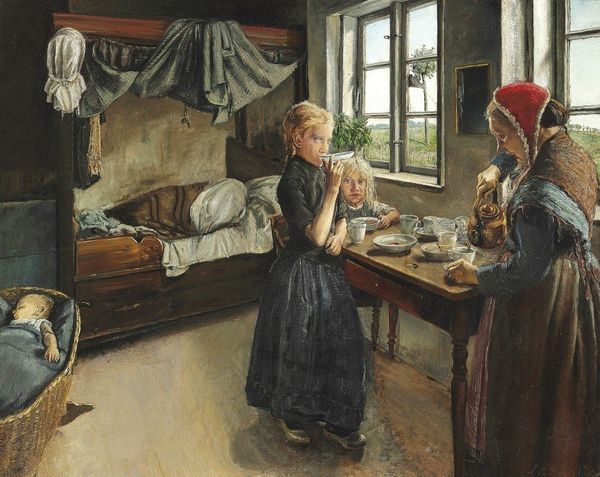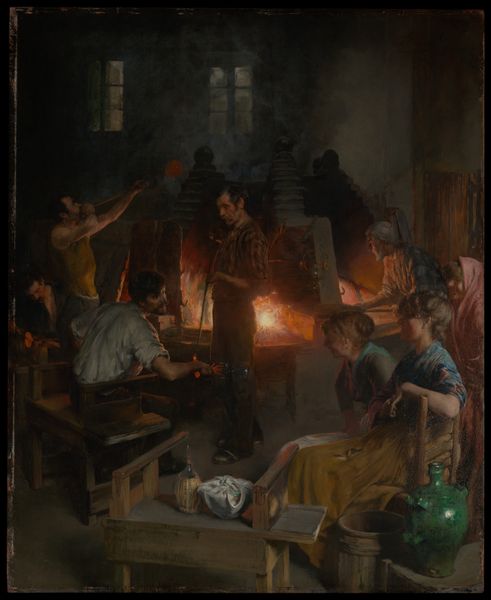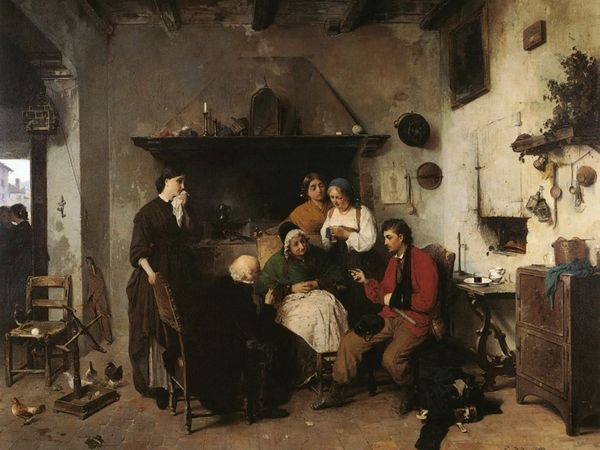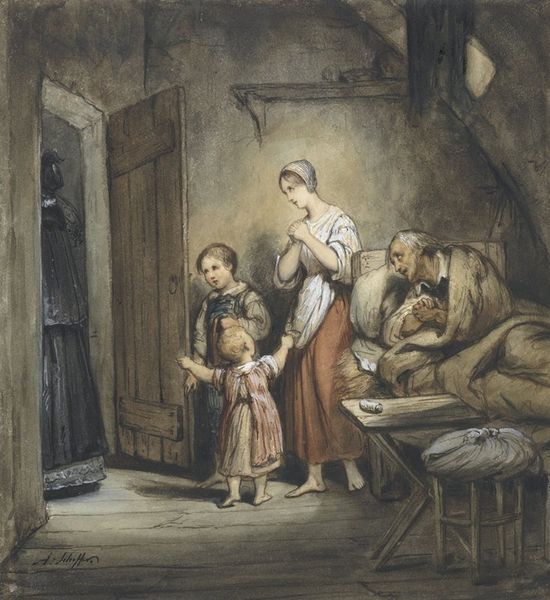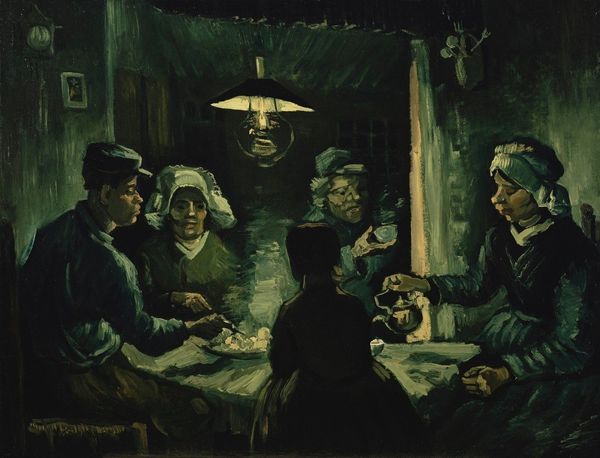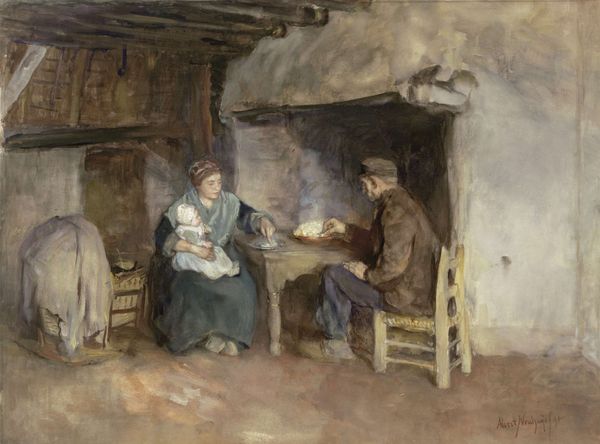
Dimensions: 81.5 cm (height) x 116.5 cm (width) (Netto), 91.9 cm (height) x 125.4 cm (width) x 7.9 cm (depth) (Brutto)
Editor: Fritz Syberg's oil painting, "At a Deathbed," created between 1890 and 1892... it's a really somber scene, isn't it? Everyone gathered around seems so still, almost holding their breath. What strikes you when you look at this painting? Curator: The materiality is quite striking, wouldn't you agree? Look at the density of the paint itself, especially in those dark robes. Syberg isn’t just depicting a scene; he's constructing it with layers of pigment, creating a tangible sense of the heavy atmosphere. Think about the means of production: oil paint, a slow-drying medium, allows for this kind of layering and reworking, a kind of built-up time, paralleling the waiting and the grief in the room. Editor: I see what you mean, almost like the paint embodies the weight of the moment. How does that connect to the social context? Curator: Well, consider the consumption habits of the time. Who commissioned works like these, and for what purpose? Genre paintings depicting everyday life, especially the less glamorous aspects like death, often served a moralizing function for a rising bourgeois class. They served to reinforce particular views of community, domesticity, even death. How are the materials here reflecting or perhaps resisting this traditional divide? Editor: So, by using this very physical medium to depict a scene of quiet sorrow, Syberg might be highlighting the lived reality of the working class and challenging that high art/craft boundary? Curator: Exactly. And even suggesting an alternate type of ‘genre-painting’ – think of Dutch Golden Age, for example, yet far removed. Consider, too, the labour involved in producing this scene. The clothes, the simple furnishings – everything speaks to a specific, material existence. These elements have an impact on what art is, how it functions within a culture and its economy. Editor: I hadn't thought about it that way, focusing on the texture and what it says about the world being represented. That’s a powerful perspective. Curator: Art is a complex interplay between artist, material, and context. Always. Thinking about each element helps deepen our appreciation and understanding.
Comments
No comments
Be the first to comment and join the conversation on the ultimate creative platform.

